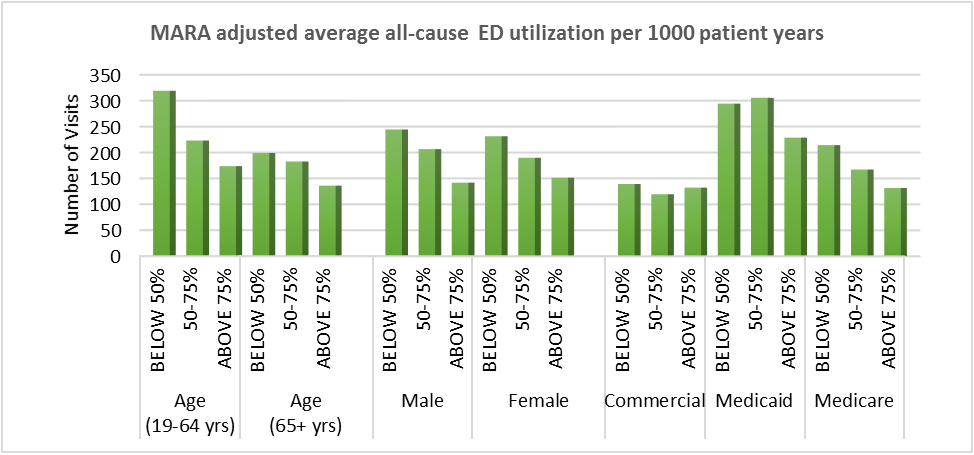Practical Analytic Approaches to Healthcare Challenges
Heart failure (HF) is a global pandemic affecting at least 26 million people worldwide that is increasing in prevalence. Currently about 6 million people in the United States (US) have heart failure, and prevalence is projected to increase to more than 8 million people by 2030 [i],[ii] Direct medical costs for HF in the US are expected to increase from $20.9 billion in 2012 to $53.1 billion in 2030.[iii]
Beta-blocker therapy is generally accepted as a key therapy for patients diagnosed with chronic systolic heart failure.[iv] The American College of Cardiology Foundation (ACCF) and the American Heart Association (AHA) Guideline (2013) for the Management of Heart Failure recommends long-term beta-blocker treatment on the basis that it can lessen the symptoms of HF, improve the patient’s clinical status, and enhance the patient’s overall sense of well-being. In addition, beta blockers can reduce the risk of death and the combined risk of death or hospitalization. Use of 1 of the 3 beta blockers proven to reduce mortality (e.g., bisoprolol, carvedilol, and sustained-release metoprolol succinate) is recommended for all patients with current or prior symptoms of HF with reduced ejection fraction (<40 percent), unless contraindicated, to reduce morbidity and mortality.[v] Prior research studies, meta-analysis and randomized clinical trials have established the efficacy of beta blockers in terms of beneficial impact on clinical outcomes in patients with current or prior symptoms of heart failure[vi],[vii],[viii],[ix] Despite these documented benefits, adherence to beta-blocker medication is found to be lowest amongst all medications used in HF.[x] To explore actual compliance with these guidelines and their impact on inpatient and emergency department (ED) stays, we analyzed a MedInsight client data for three calendar years (2012-2014). The target population was members aged 18 years and older, diagnosed with Congestive Heart Failure (CHF) and receiving beta-blocker therapy. Medication adherence was measured as the percentage of prescribed doses of beta- blocker or beta-blocker combination medication effectively taken by the patient over a specified period. This population was grouped into three medication adherence categories i.e. below 50 percent, 50-75 percent, and above 75 percent.
Results
Figure 1 presents the demographic findings of our analysis. The data indicated that elderly members (ages 65 +) were found to be more adherent to beta-blockers therapy as compared to the younger population (ages 19-64 years). No substantial variation in medication adherence was observed between male and female members.

We performed further statistical analysis to explore the relationship of beta blockers adherence to all cause emergency department (ED) and inpatient (IP) utilization. The ED and IP Utilization rates (per 1,000 patient years) were adjusted using Milliman Advanced Risk Adjusters (MARA) software. Figure 2 and Figure 3 highlight the following observations on ED and IP utilization rates in relation to adherence:
Observations by Age Band:
Observations by Gender:
Observations by Line of Business:

Discussion
The above results show a statistically significant relationship between adherence to beta blocker therapy and all-cause ED and IP utilization. The results suggest that continued focus on beta-blocker therapy for members diagnosed with HF may result in reductions in ED and IP utilization. Although the analysis was based on limited administrative data, the statistical significance of the results highlight adherence to beta blockers as a target for interventions to reduce emergency department and inpatient utilization.

Available at: https://www.ncbi.nlm.nih.gov/pmc/articles/PMC5494150/#
[ii] Heart Disease and Stroke Statistics-2016 Update: A Report from the American Heart Association. Writing Group Members, Mozaffarian D, Benjamin EJ, Go AS, Arnett DK, et al. American Heart Association Statistics Committee; Stroke Statistics Subcommittee. Circulation. 2016 Jan 26; 133(4):e38-360. Available at: https://circ.ahajournals.org/content/133/4/e38.long [iii] Heidenreich PA, Albert NM, Allen LA, et al. Forecasting the impact of heart failure in the United States: a policy statement from the American Heart Association. Circulation: Heart Failure. 2013;6(3):606-619. Available at: https://circheartfailure.ahajournals.org/content/6/3/606.full.pdf?download=true [iv] Jondeau G, and Milleron O. Beta-Blockers in Acute Heart Failure- Do They Cause Harm? JACC: Heart Failure Aug 2015, 3 (8) 654-656. [v] Yancy CW, et al. American College of Cardiology Foundation/American Heart Association Task Force on Practice Guidelines. 2013 ACCF/AHA guideline for the management of heart failure: a report of the American College of Cardiology Foundation/American Heart Association Task Force on practice guidelines. Circulation. 2013 Oct 15; 128(16):e240-327. Available at: https://circ.ahajournals.org/content/128/16/e240.full.pdf+html [vi] Bristow MR. Treatment of chronic heart failure with β-adrenergic receptor antagonists: a convergence of receptor pharmacology and clinical cardiology. Circ Res2011; 109:1176-94. Available at: https://circres.ahajournals.org/content/109/10/1176.full [vii] Manurung D, Trisnohadi HB. Beta blockers for congestive heart failure. Acta Med Indones. 2007 Jan-Mar; 39(1):44-8. Available at: https://www.inaactamedica.org/archives/2007/17297209.pdf [viii] Heidenreich P, Lee T, Massie B. Effect of Beta-Blockade on Mortality in Patients with Heart Failure: A Meta-Analysis of Randomized Clinical Trials 1. J Am Coll Cardiol. 1997; 30(1):27-34. Available at: https://content.onlinejacc.org/article.aspx?articleid=1124060 [ix] Hernandez AF, et al. Clinical effectiveness of beta-blockers in heart failure: findings from the OPTIMIZE-HF (Organized Program to Initiate Lifesaving Treatment in Hospitalized Patients with Heart Failure) Registry. J Am Coll Cardiol 2009; 53:184-192. Available at: https://content.onlinejacc.org/article.aspx?articleid=1139342 [x] Viana M, Laszczynska O, et al. Medication adherence to specific drug classes in chronic heart failure. J Manag Care Spec Pharm. 2014 Oct;20(10):1018-26.